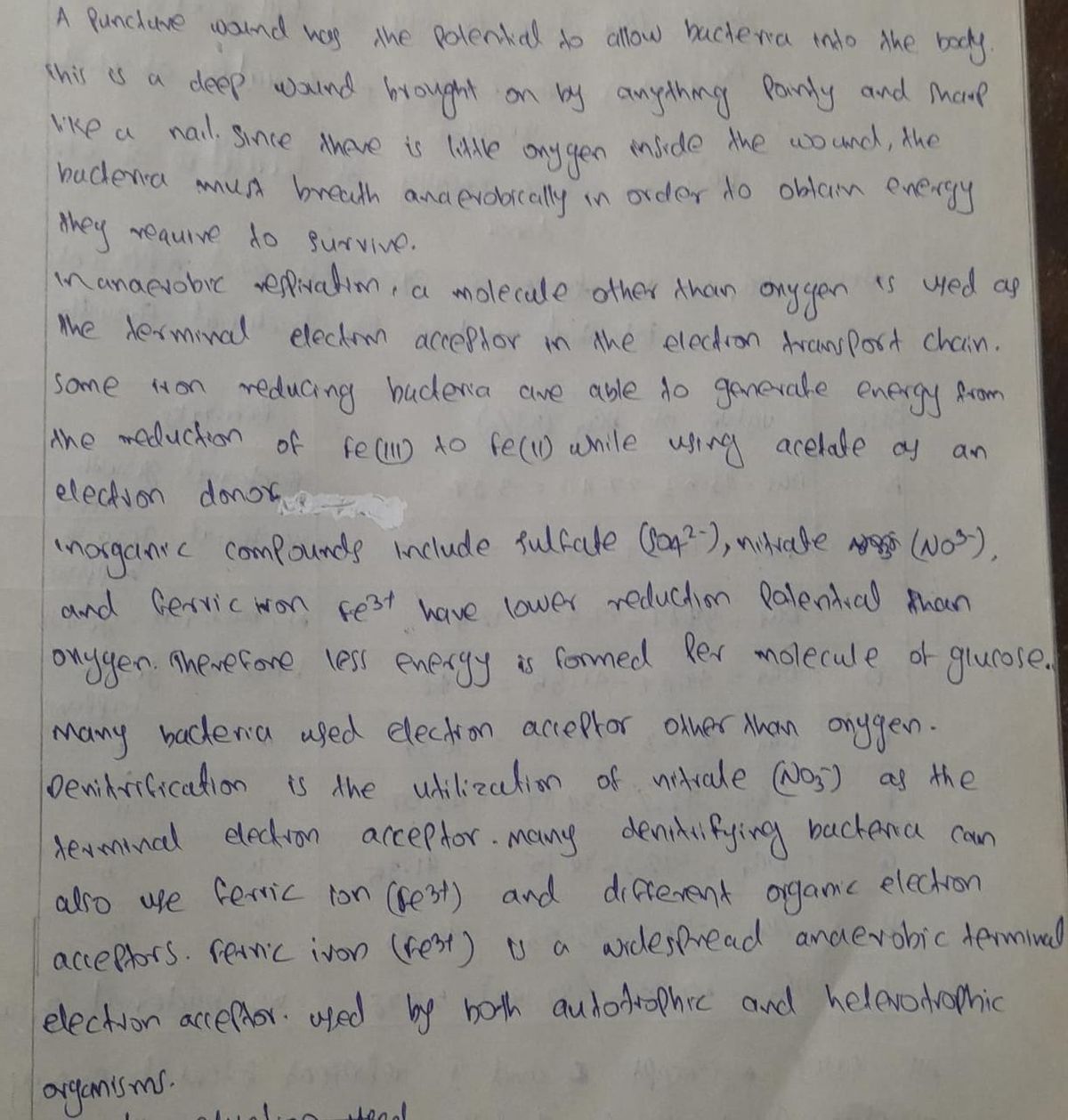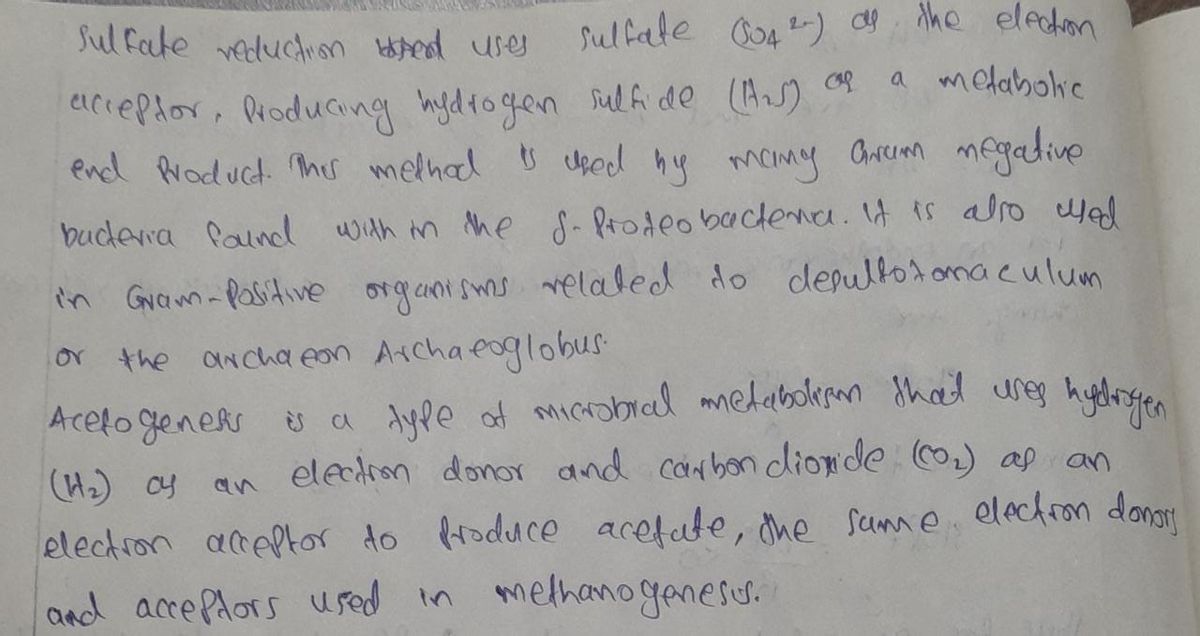Which of the following electron donor/electron acceptor pairs represent potential energy reactions for bacterial growth? Assume that all reactants and products are at unit activity, except that at pH=7. Case Electron donor Electron acceptor A Acetate Carbon dioxide B Acetate Fe3+ (reduction to Fe2+) C Acetate H+ (reduction to H2) D Glucose H+ (reduction to H2) E H2 Carbon dioxide F H2 Nitrate (reduction to N2) G S (oxidized to sulfate) Nitrate (reduction to N2) H CH4 Nitrate (reduction to N2) I NH4+ (oxidized to nitrite) SO42- (reduction to H2S + HS-)
Which of the following electron donor/electron acceptor pairs represent potential
energy reactions for bacterial growth? Assume that all reactants and products are at unit activity,
except that at pH=7.
Case Electron donor Electron acceptor
A Acetate Carbon dioxide
B Acetate Fe3+ (reduction to Fe2+)
C Acetate H+ (reduction to H2)
D Glucose H+ (reduction to H2)
E H2 Carbon dioxide
F H2 Nitrate (reduction to N2)
G S (oxidized to sulfate) Nitrate (reduction to N2)
H CH4 Nitrate (reduction to N2)
I NH4+ (oxidized to nitrite) SO42- (reduction to H2S + HS-)
 l
l
Trending now
This is a popular solution!
Step by step
Solved in 2 steps with 3 images









